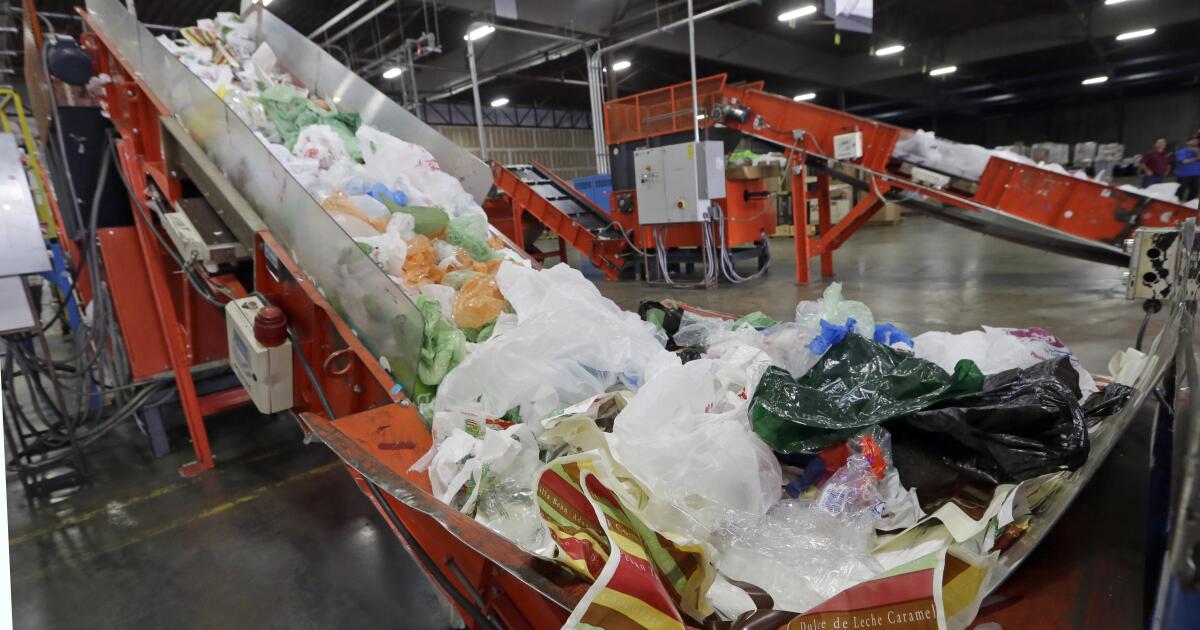There is an irony on our southern border. It is a flashpoint for the country right now – strung up by barbed wire, overwhelmed by migrants, fueling feverish emotions – and better border management is urgently needed. But while the border is where we face immigration challenges, it is not where solutions will be found.
If we want to reduce tension at the border and lower our shared political temperature, we must take a broader look at our immigration policies. Creating more worker visa programs is a good starting point.
It is no secret that the staggering backlog of more than 2 million asylum cases in our country is due, in large part, to immigrants fleeing poverty. Yes, some are fleeing poverty. and violence, but many flee directly from poverty. Their asylum applications will generally be denied because economic desperation, however serious, is not one of the few Legally recognized criteria for asylum.. Still, these immigrants enter a years-long adjudication process because there are no other options for them.
Many Americans think that “economic” immigrants should “stand in line and wait their turn,” but this warning fails to recognize that, aside from the asylum quagmire, there is generally no line for those fleeing poverty to wait. Approximately 140,000 employment-based visas each year.in a short labor market around 3 million workers – and many of the workers are needed for types of work that have few or no visas available. By creating more guest worker programs we would not only reduce crowds at the border, but we would also help the country meet some obvious economic needs.
Bipartisan roadmaps for such programs already exist.
Take, for example, the proposed Border Security, Economic Opportunity, and Immigration Modernization Act of 2013, which included the creation of a W visa to allow entry for low-skilled temporary workers seeking jobs that do not require a college degree. This would have met many of our country's needs when it comes to critical industries like construction, landscaping, and food services—parts of the economy for which we already rely heavily on unauthorized workers, as much as we hate to admit it. .
The 2013 legislation did not become law, despite the support of 68 senators, but similar bipartisan proposals are now on the table, even in our explosive political environment. Rep. Lloyd Smucker (R-Pa.) and Rep. Henry Cuellar (D-Texas) last spring introduced a bill called the Essential Workers for Economic Advancement Act, which would establish a new visa category, H-2V, for fill jobs that have remained open for a required period of time and are located in regions where the unemployment rate is less than 8%.
The “essential worker” approach would benefit immigrants and a variety of American industries, as laid out in “Immigration Reform: A Path Forward,” a recent report. Cornell Law School Immigration Law and Policy Program White Paper. One of the several suggestions made there is to start with medical care.
The government already allows some non-U.S.-resident health professionals who have been trained in the U.S. to remain in the country to work, if there is a facility seeking to hire them. The Conrad-30 Waiver Program (“30” refers to a limit for each state on the number of people who can receive the waiver each year) used to be called the Conrad-20 program, but demand required a jump to 30, and it still it is not. provide enough health care workers in states like South Dakota, home of former Republican Sen. Kent Conrad, who originally proposed the program. Our need for more health professionals (particularly in rural, Republican-leaning regions) is so great that it is difficult to understand why we insist that foreign health professionals trained in the United States leave the country after graduation.
The success of the Conrad-30 surely points the way forward. Why not let states decide how many foreign workers they need and give each participating state an allocation of work visas or waivers to issue in labor-short industries?
In 2019, Utah Republican Rep. John Curtis introduced a bill that would create a pilot program for states to customize their worker visa allocations based on local economic needs. States that decide to participate could determine, within limits, the duration of the visas and the skills of the recipients. Visa holders must periodically request renewal.
Such a state visa program would be an opportunity for the “laboratories of democracy” to flex their muscles, address specific labor shortages, and reduce tension on the nation's southern border. As Curtis said in an interview, a state-tailored program is smart small government. “It's a million times easier to hold the governor accountable than the congressman, right?” she said. “It gives people on the ground more control over their destiny.”
Perhaps most importantly, implementation of these and other viable visa proposals does not require any legislative confrontation with the issue of permanent residency. They propose temporary visas only, and each program comes with limits on the number of visas that can be administered and requirements for regular renewal. Permanent residency, if applied for by someone holding such a visa, would have to be obtained through other immigration channels.
Of course, strict oversight would be necessary to ensure that employers conduct the due diligence required by any of these programs, first offering available positions to American workers, and being responsible for any exploitation of foreign workers.
When we create aggressive worker visa programs, a swath of people who would otherwise show up at our southern border asking for asylum are welcomed into a state or industry that needs and wants them. Immigrants get the opportunity they've been seeking, our country makes progress on the labor shortage, the southern border gets much-needed relief, and our contentious immigration debate has a chance to cool down a bit.
D.W. Gibson is the author of “14 miles: building the border wall” and research director of Ideas spacewho collaborates with Cornell Law School to support their recent white paper about immigration.












